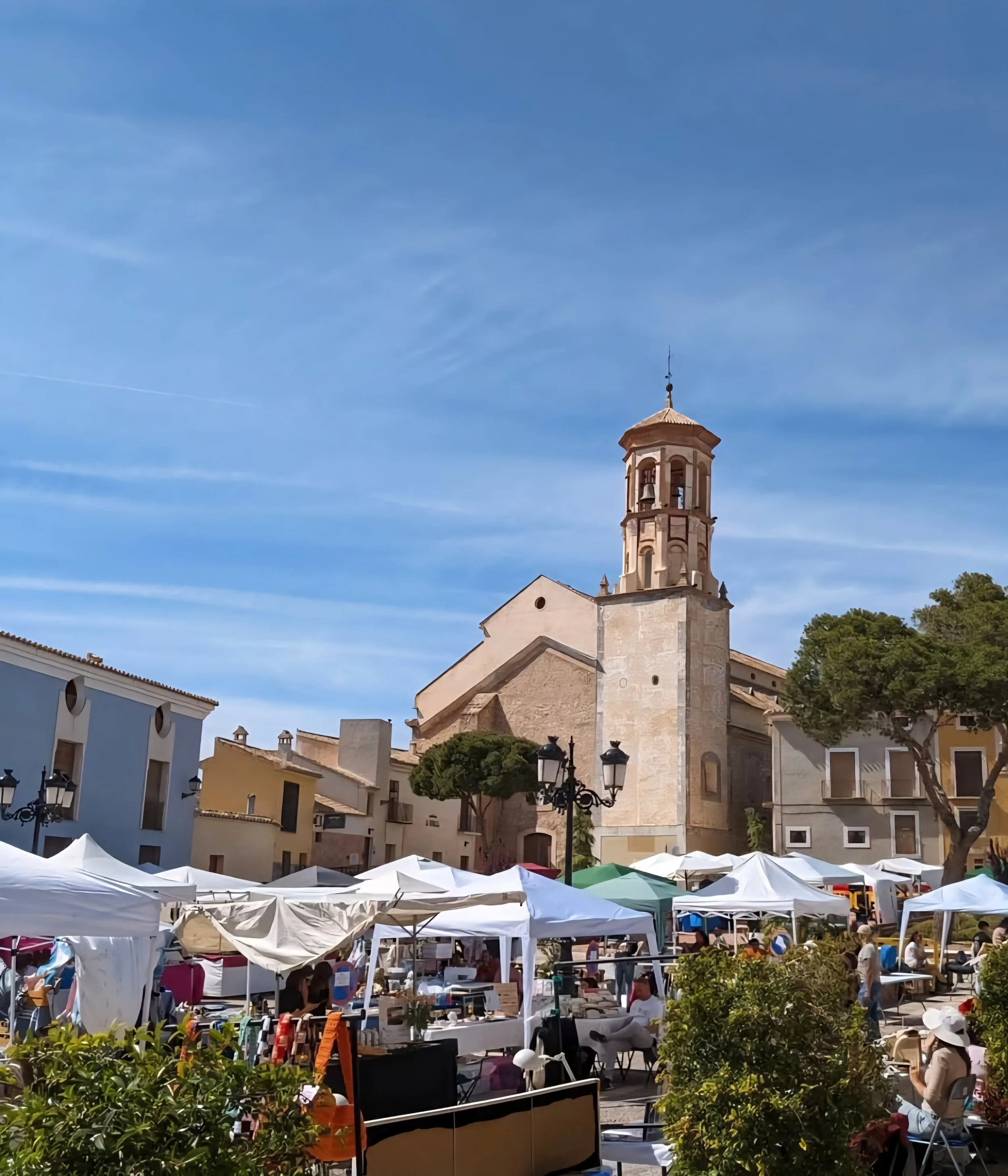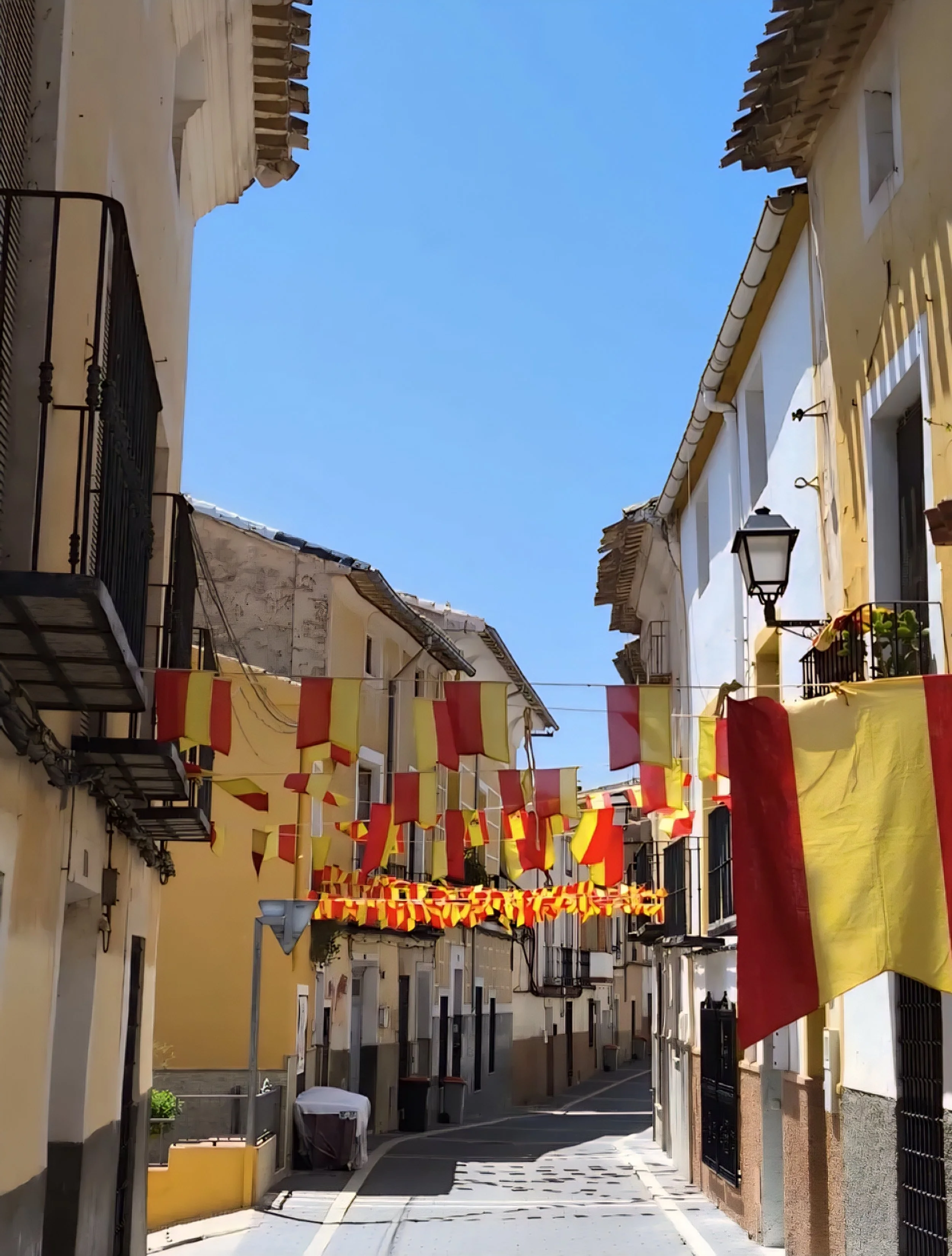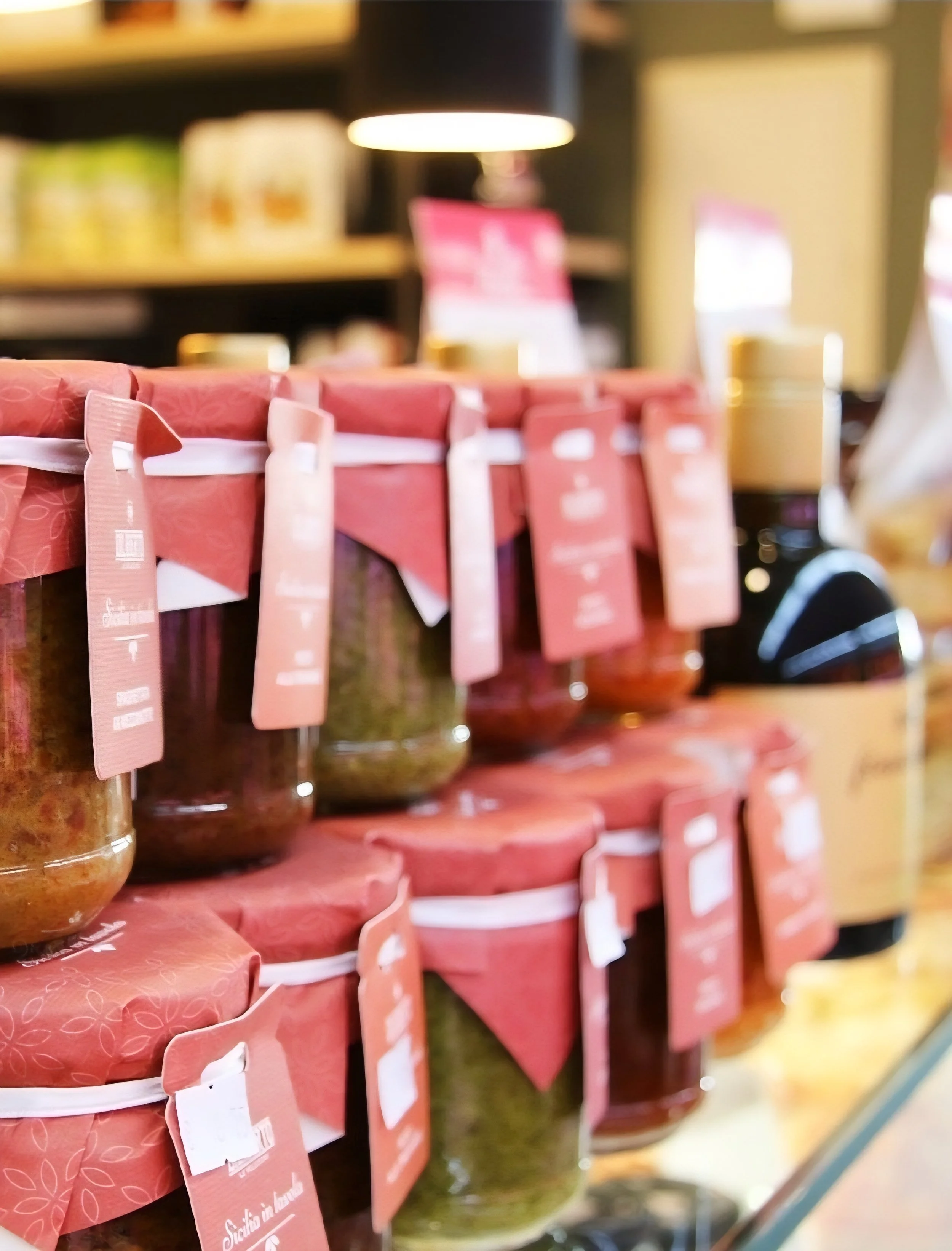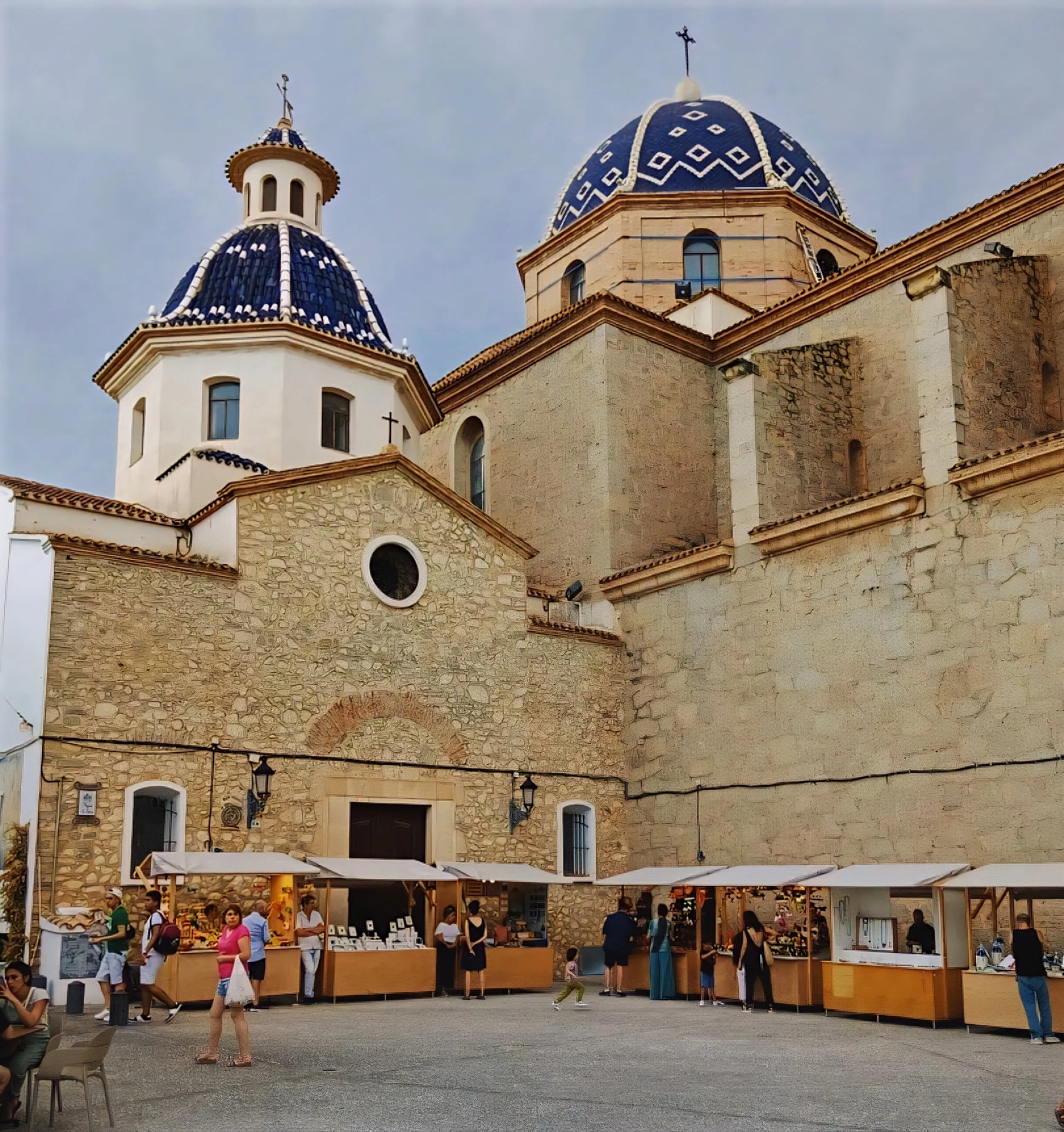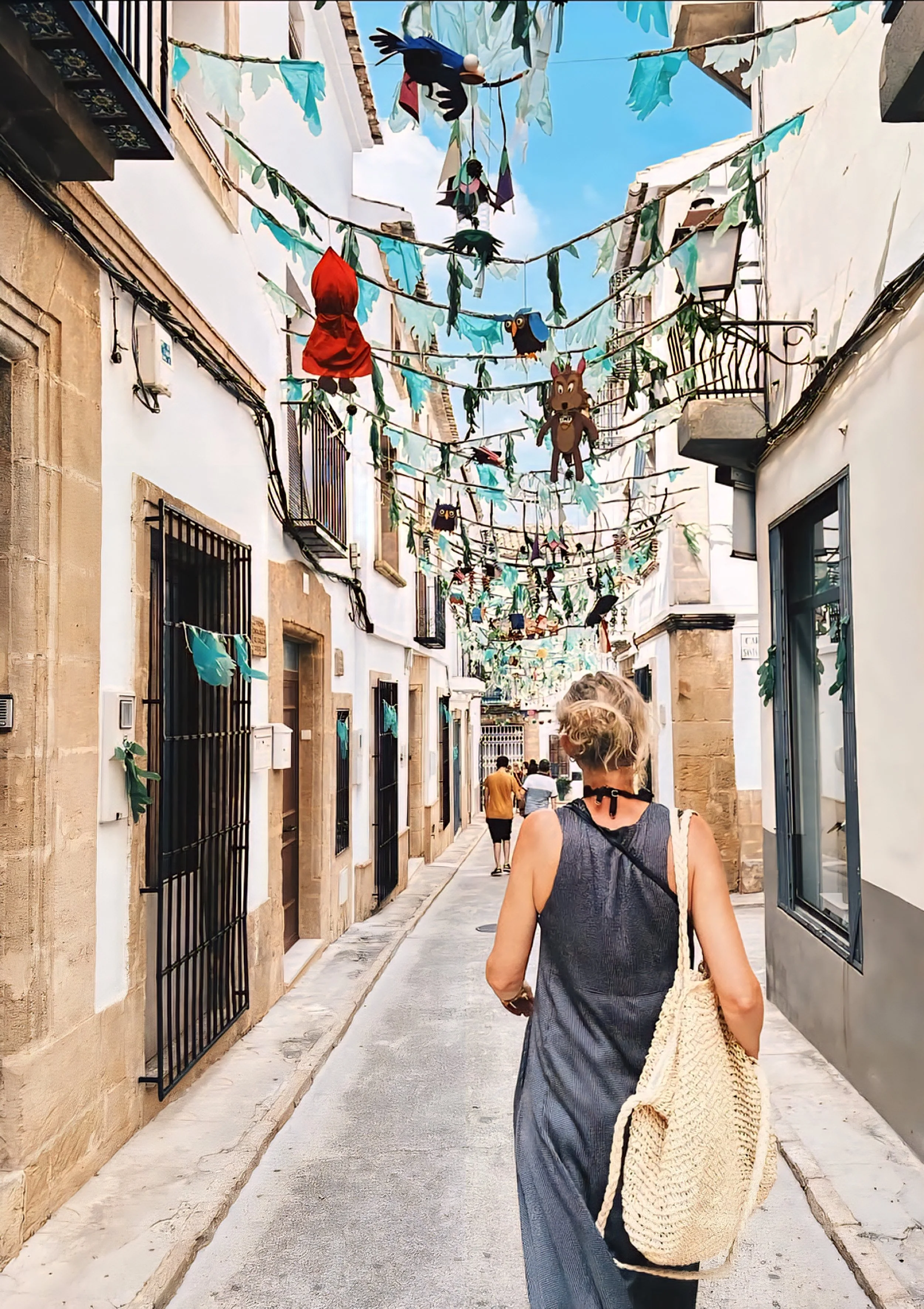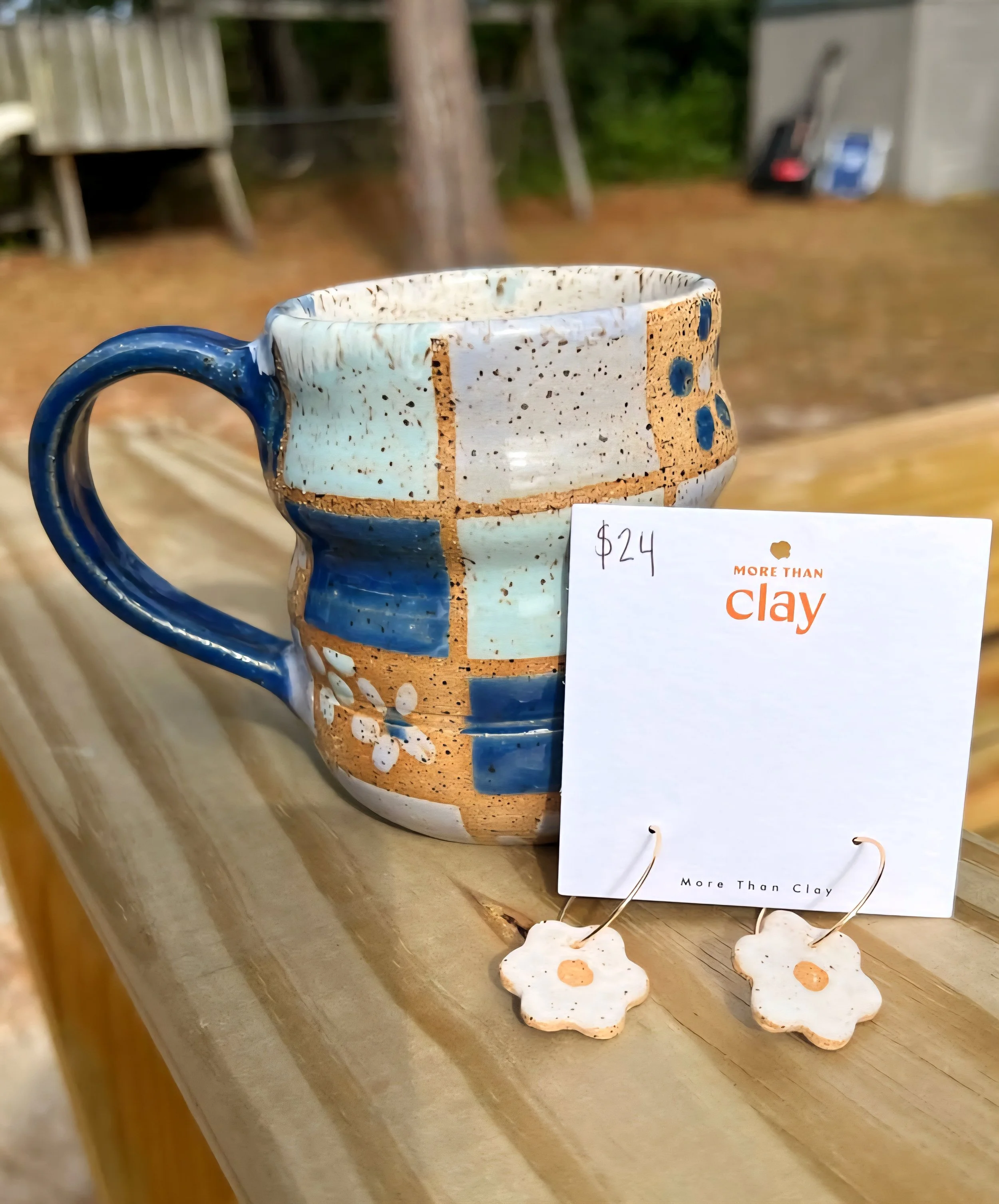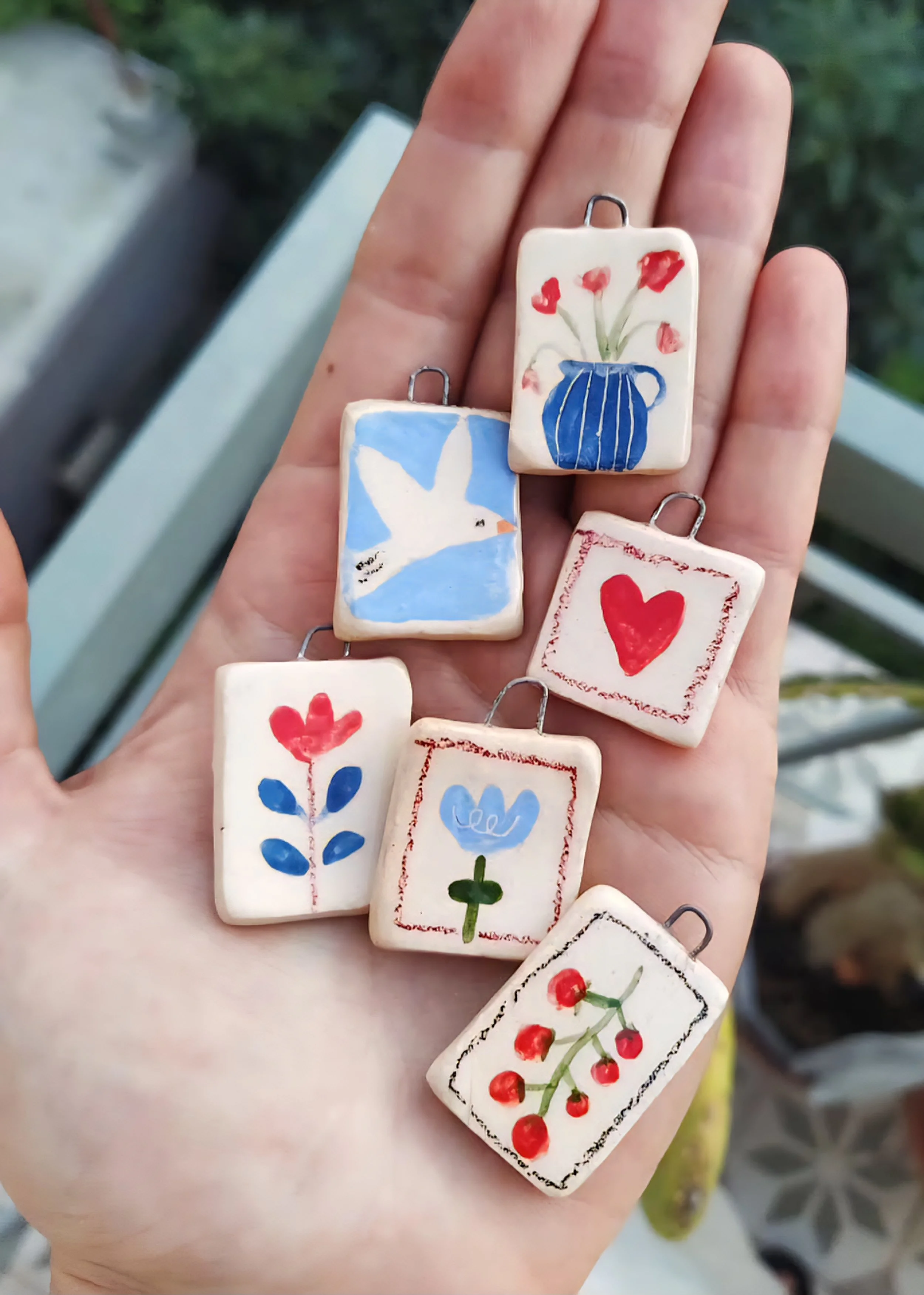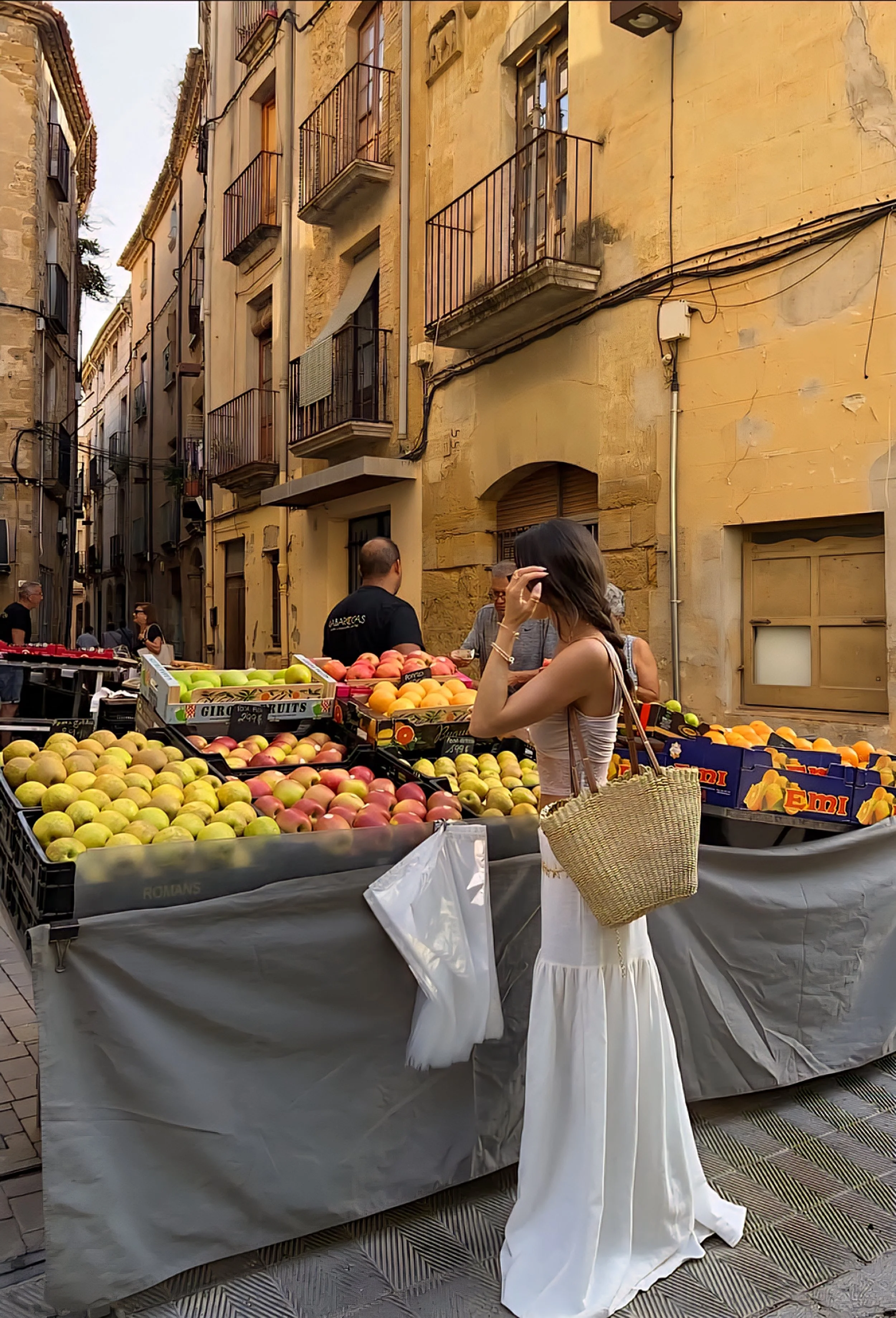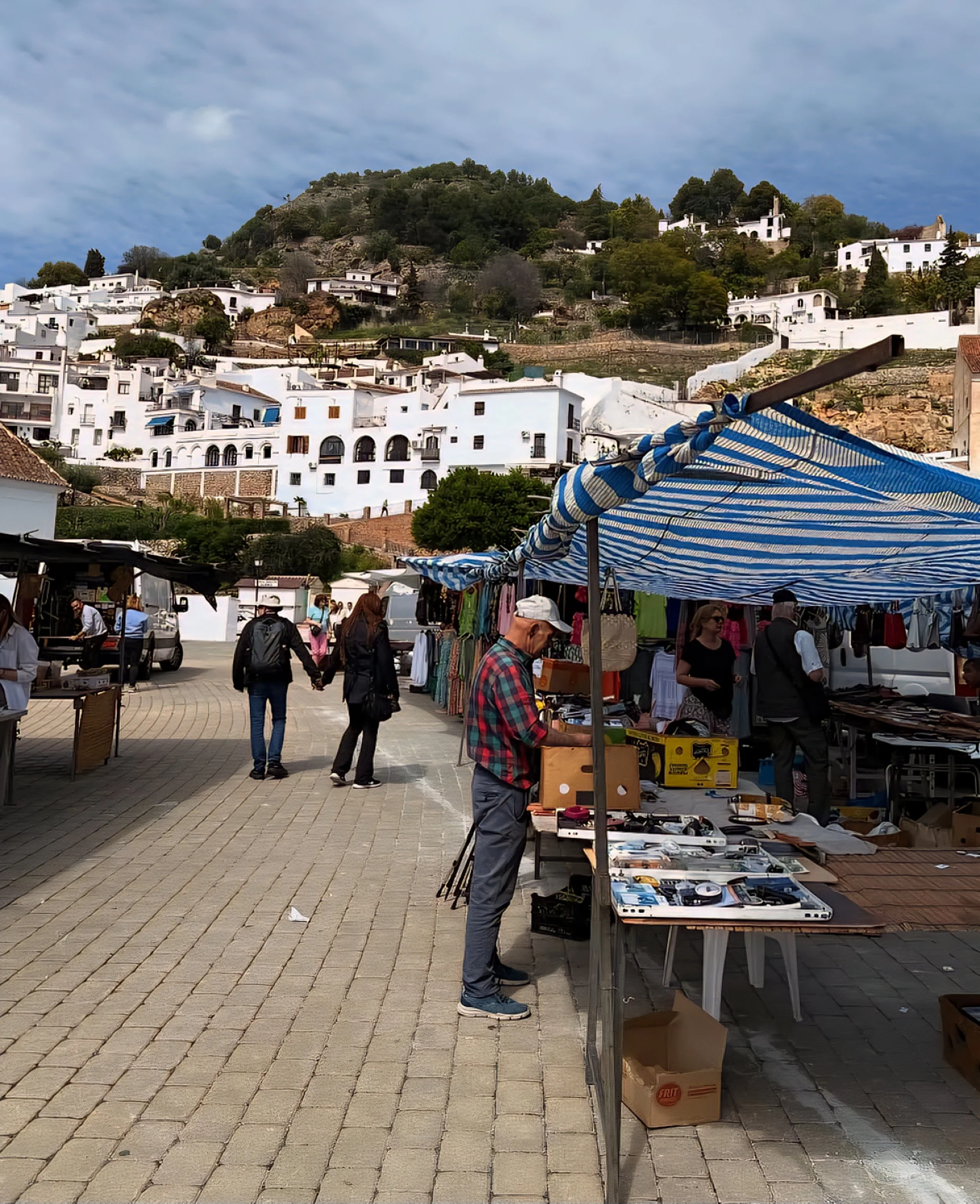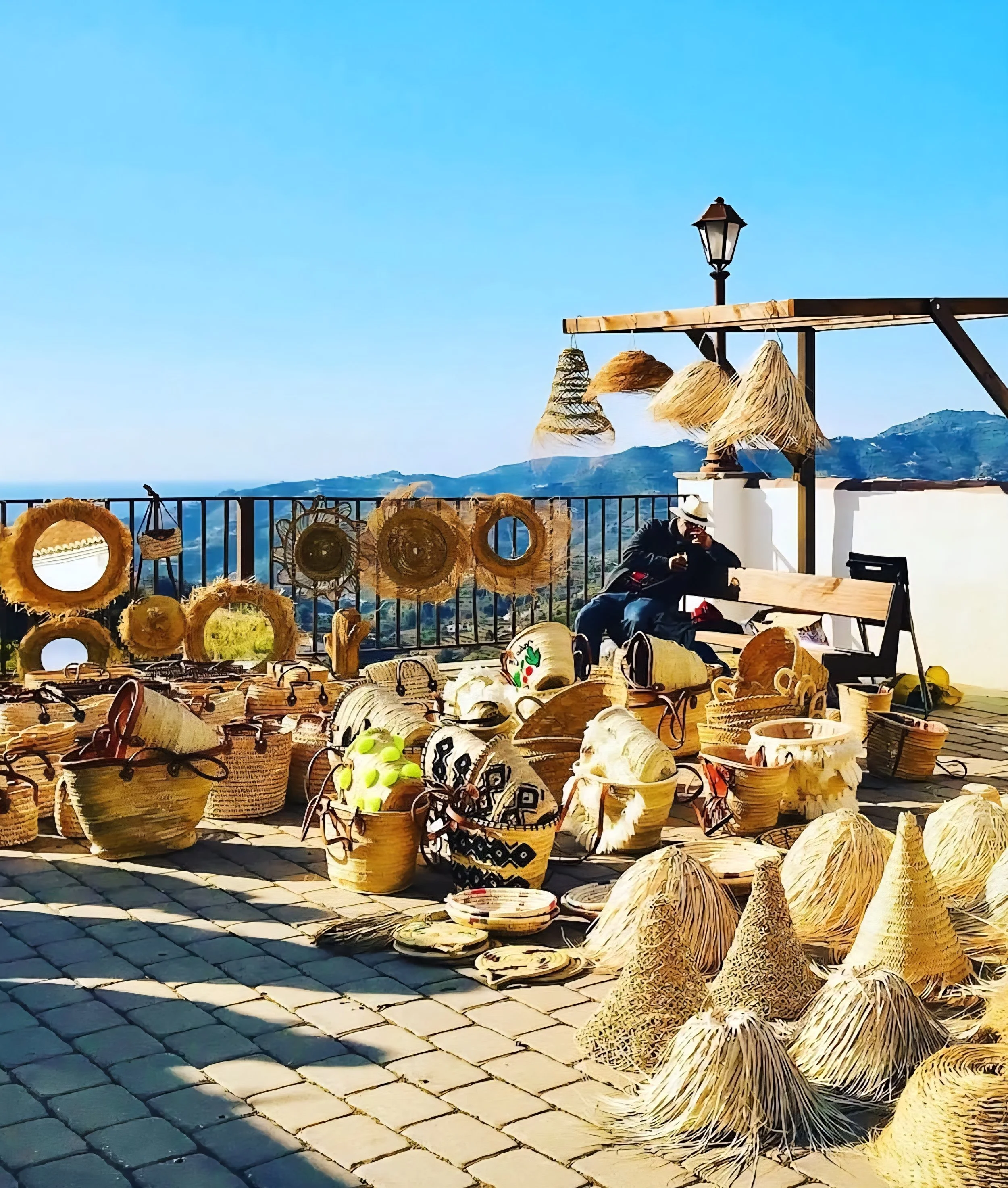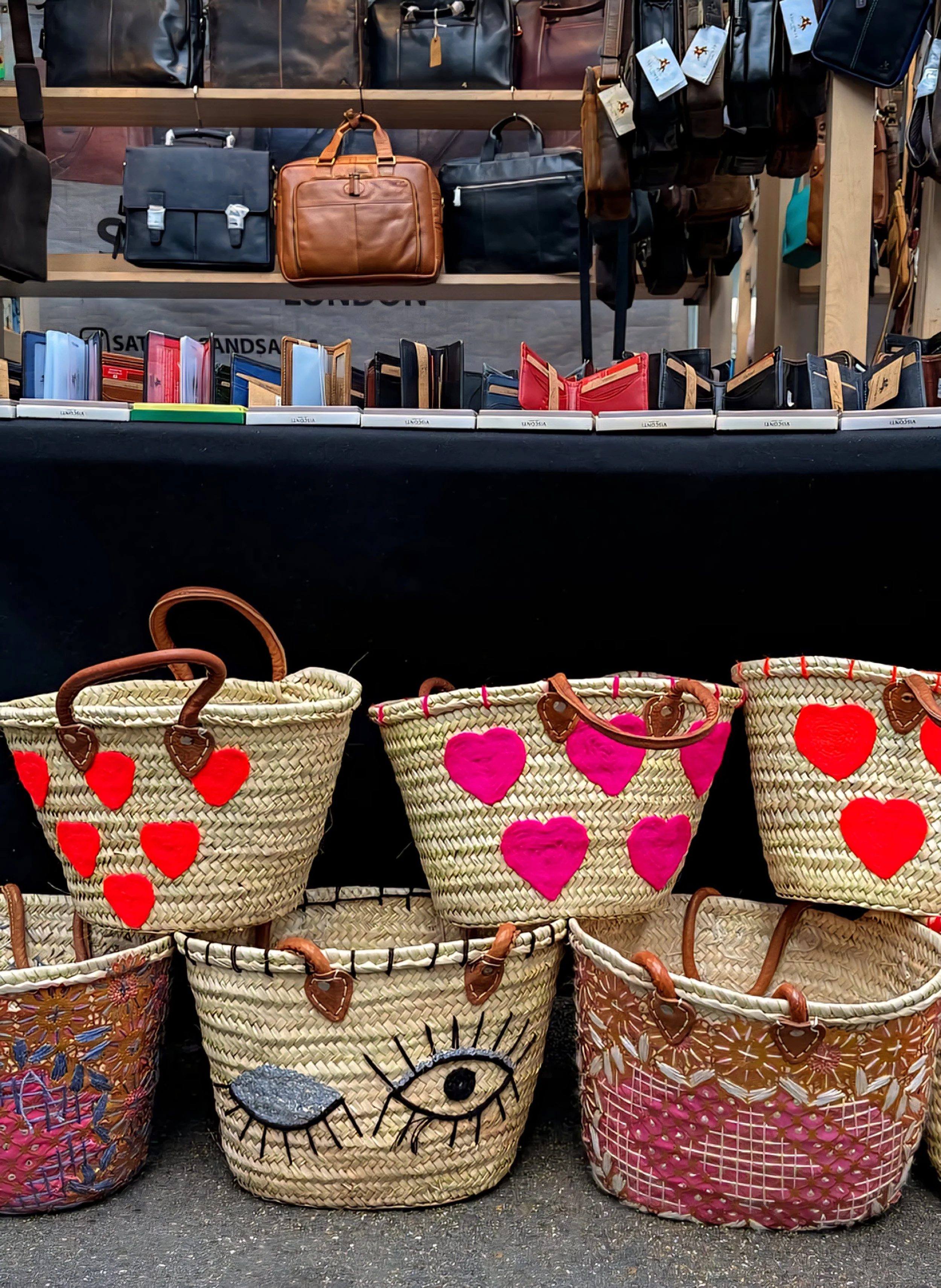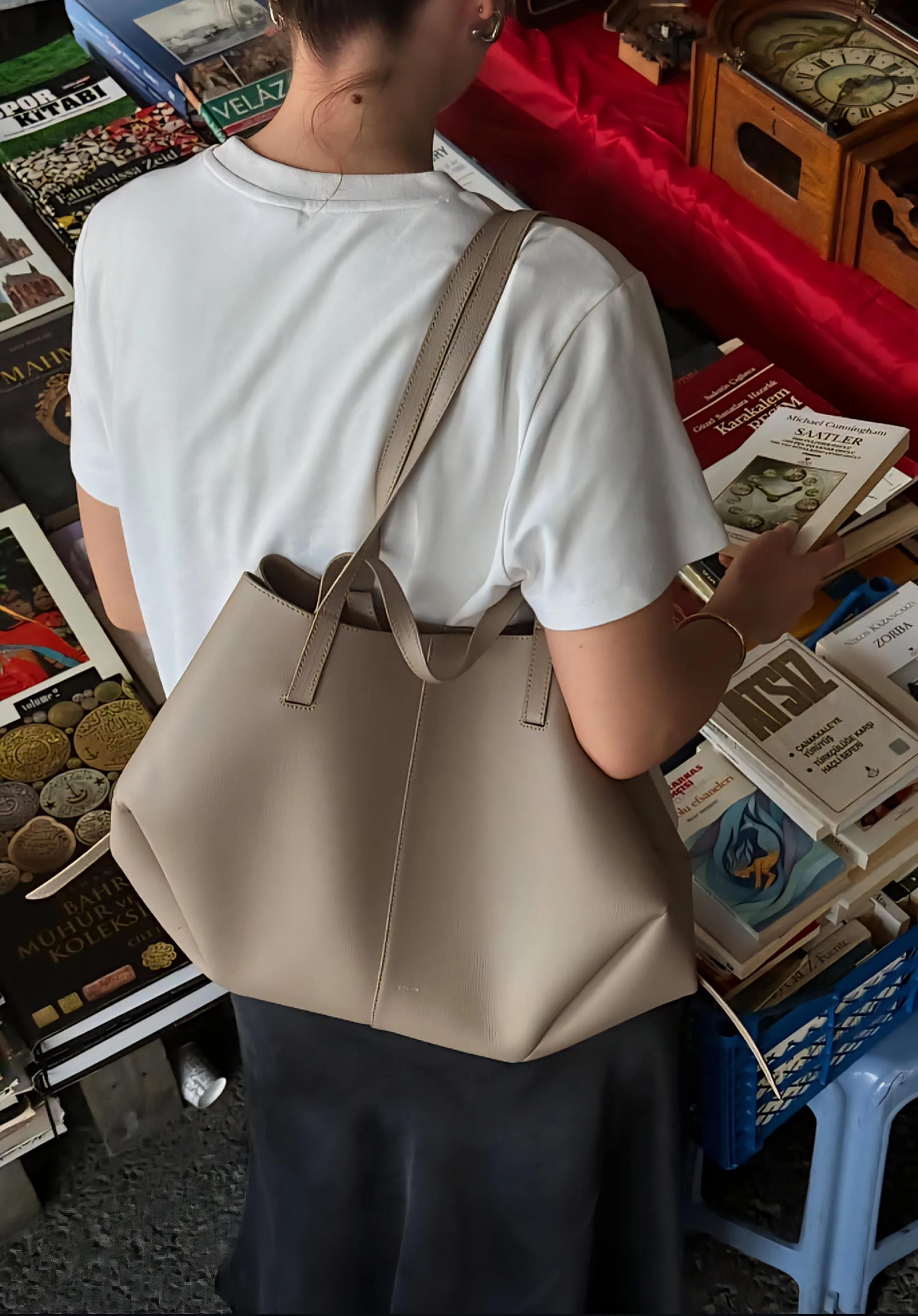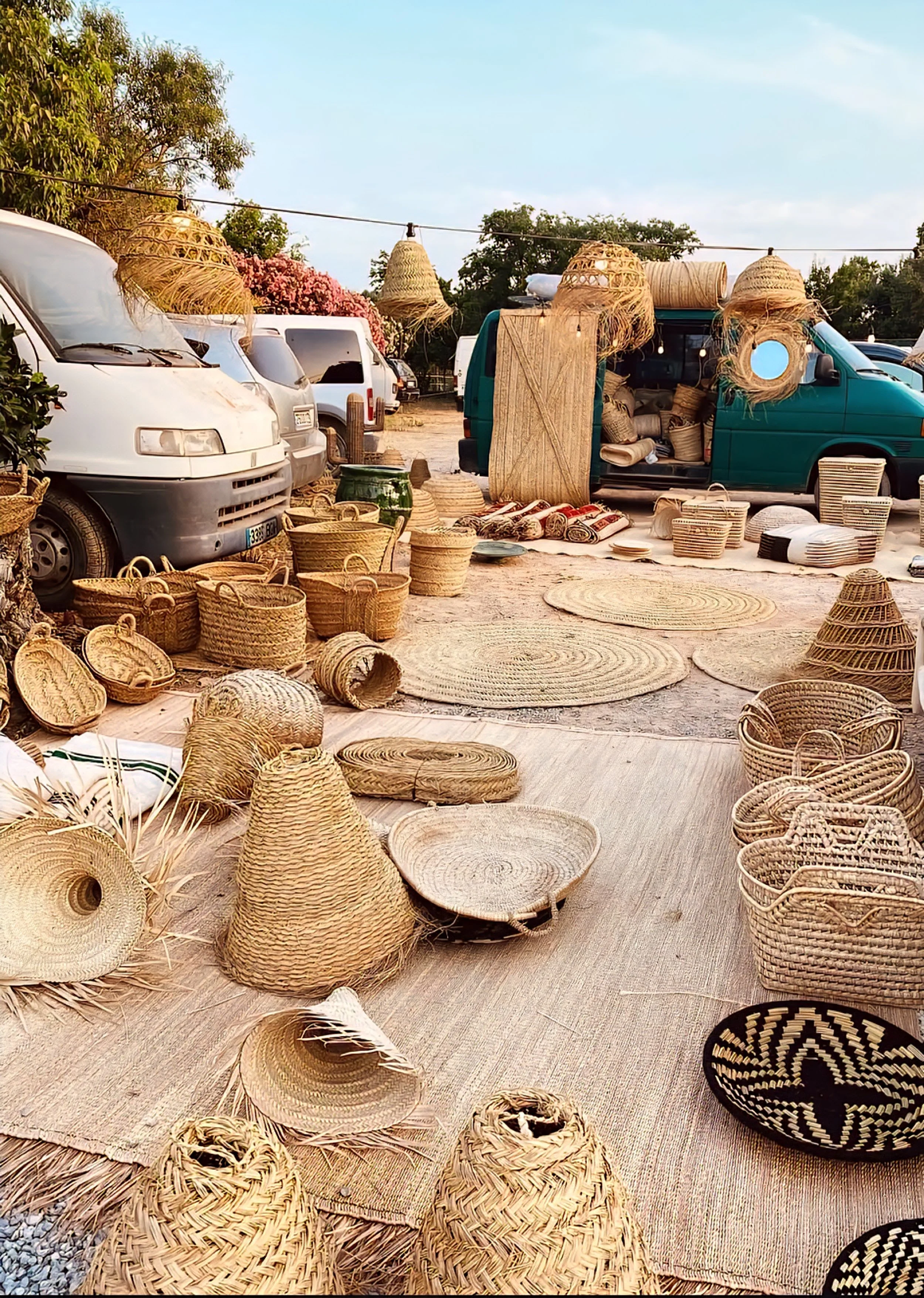Spain’s Quietest Summer Markets (That Most Travelers Miss)
You know how most people picture Spain’s markets - big, loud, busy… a bit overwhelming? This post is for travelers who want the complete opposite. If you prefer a slower pace, small towns, and markets where you can browse quietly without jostling through crowds, you’re in the right place.
These are the kinds of places where you can pick up local olive oil straight from the maker, chat with a potter about their work without any rush, and spend your morning wandering at your own pace. Just a chance to really feel present and enjoy Spain’s summer vibe in a way that most tourists miss.
Love browsing artisan crafts, picking up fresh produce, or just sitting with a coffee watching a sleepy plaza wake up? Well, these quieter markets are perfect if you’re looking for something a bit more thoughtful and local this summer.
Cehegín, Murcia – A Calm Market that Feels Local and Easygoing
If you’re in southern Spain and want a market that’s genuinely quiet, Cehegín is a great option. It’s a small hill town about an hour from Murcia, and its crafts market happens just once a month (on the last Sunday) which keeps it feeling low-key.
The market itself is small and relaxed. A few dozen stalls line the Plaza del Castillo and nearby streets, with local makers selling things like olive oil, handmade soaps, baskets, and cured meats. There’s no noise, no street performers, and no aggressive selling - just locals browsing slowly and catching up with each other.
If you’re someone who enjoys browsing without feeling rushed or overwhelmed, this feels right. The pace is easy, and because it’s not big, you can take your time without feeling like you need to “get through it.”
Afterward, it’s worth popping into Cafetería El Patio, just a minute’s walk away. It’s nothing fancy (plain tables, older locals reading the paper) but that’s what makes it nice. You can sit quietly, grab a coffee and a slice of cake, and watch the town go by for as long as you want.
How to get there:
The easiest way is by car from Murcia city (about an hour). Public transport is minimal and would take most of a day, so driving makes sense here. Parking is usually easy just outside the market area, and from there it’s a short walk.
Altea Artisan Market, Costa Blanca – A Quiet Evening Stroll with Small Finds
Altea gets visitors, sure - but its summer artisan market has a different feel than the bigger coastal towns nearby. This isn’t a loud, crowded market; it’s a series of small stalls that pop up in the evening along the whitewashed streets of the old town.
It’s a good one to visit if you prefer wandering slowly and maybe picking up something handmade without pressure. You’ll find a mix of jewelry, ceramics, woven goods, and soaps, but nothing mass-produced. Most of the stallholders are small-scale artisans, happy to chat a little if you’re interested but just as happy to let you browse quietly.
The timing helps keep it peaceful: it usually starts late afternoon and continues through the evening when the heat eases and everything slows down naturally. You can easily combine it with a quiet dinner at a local spot nearby.
If you want a place to pause, Bar Ramblilla is a small bar tucked just off the market streets where you can sit outdoors with a cold drink and take in the scene without feeling like you’re in a tourist hotspot.
How to get there:
It’s easy to reach by bus from Benidorm or Alicante - the buses drop you at the base of the town, and from there it’s a short but steep walk up into the old town where the market takes place. Wear comfortable shoes because the cobbled streets can be uneven.
Planning a peaceful French escape this year?
We’ve put together a full 3-day itinerary for Uzès - one of the most charming market towns in southern France. It’s packed with cozy cafés, scenic walks, market-day tips, and relaxed local spots you will love.
Xàbia (Jávea) Weekly Market, Costa Blanca – Local Produce at a Relaxed Pace
Jávea’s weekly market takes place every Thursday in the old town, and compared to some of the bigger markets along the Costa Blanca, it feels refreshingly calm. It’s mostly locals shopping for their groceries: seasonal fruits and vegetables, cured meats, cheeses, and stalls with flowers or small crafts.
The market spreads around the main square and nearby streets, but it’s compact - you can easily walk it without feeling overwhelmed. There’s no music or big crowds; the pace is genuinely relaxed, and if you like to take your time browsing a few stalls and then finding somewhere for a coffee, this is perfect.
If you want a café that feels local and easygoing afterward, Bar Mercat is right next to the main market square. It’s popular with older locals - simple chairs outside, good coffee, and the kind of place where you won’t feel rushed if you just want to sit and watch.
How to get there:
You can get here by bus from Alicante or Benidorm. The station is about a 10-minute walk from the old town where the market is held. If you’re driving, parking near the church works well.
Agost Pottery Stalls, Alicante – A Market that Feels Like a Studio Visit
Agost is known for pottery, but it’s not a busy market town. What you get here in summer is more like a series of small pottery displays outside individual workshops - especially on weekends when studios open their doors and set out their latest pieces.
It’s perfect if you prefer browsing without a crowd. You can walk through the village, stopping in at different workshops at your own pace. Most of the potters here are happy to answer questions if you’re interested, but you’ll never feel like you’re part of a rushed tour or sales pitch.
There’s no loud music, no big crowds, just a handful of open doors and well-made ceramics. It’s easygoing, personal, and ideal if you like to support small makers.
If you want a quiet coffee after browsing, Bar El Centro is as casual as it sound: friendly staff, simple terrace seating, and a calm place to sit before you leave.
How to get there:
Agost is about a 25-minute drive from Alicante. There’s no easy direct public transport, so driving makes the most sense. Once you’re there, it’s easy to park near the center and walk everywhere.
Santa Marina del Sil Market, León – A Tiny Market by the River
Santa Marina del Sil is a small village along the Sil River in León province, and in summer, it hosts a casual market during its annual fishing contest in July.
This isn’t a tourist market at all - it’s more like a few tables set up by locals selling homemade jams, honey, vegetables, and maybe some hand-knitted items. It’s quiet, friendly, and feels very local.
If you like a relaxed, unhurried vibe where you can walk around without being jostled or rushed, this is a lovely stop. You can watch the fishing contest, browse a few stalls, and then head into the small village bar nearby for a coffee or cold drink where everyone seems to know everyone else.
How to get there:
You’ll need a car. It’s about 1.5 hours from León city, and driving gives you freedom to stop along the river or explore small villages nearby. Public transport isn’t really an option here, which helps keep this place as quiet as it is.
If you’re anything like us, we think you’ll like these guides as well…
5 Charming Villages in Southern France You’ve (probably) Never Heard Of
Discover Cabourg: The Romantic Normandy Gem You Must Visit This Year
Slow Travel in Tuscany: 4 Tranquil Towns for Cozy Cafés and Scenic Walks
Frigiliana Sunday Craft Stalls, Andalucía – A Quiet Market in a Whitewashed Village
Frigiliana is a beautiful village in the hills above Nerja, but its Sunday craft stalls still manage to feel low-key and relaxed - especially compared to the busy beach markets nearby. The stalls aren’t huge or flashy: just local artisans selling handmade baskets, ceramics, olive oils, soaps, and a few unique craft items you won’t easily find elsewhere.
The nice thing about this market is how it blends into the village itself. It’s not a separate event that takes over the town, it feels like an extension of the everyday rhythm, where locals and a few visitors wander slowly, chat, and browse without pressure.
If you like quiet, photogenic streets and authentic artisan finds, this is a really pleasant place to spend a morning. Afterward, a good café to escape to is El Mirador de Frigiliana. It’s not right in the middle of the stalls, so it stays calm, and the view over the valley is the perfect excuse to sit and stay a while with a coffee or glass of local wine.
How to get there:
Frigiliana is easily reachable by bus from Nerja (about 15 minutes up into the hills) and buses run regularly on Sundays. If you’re driving, parking is available on the edge of the village, and from there it’s a short uphill walk into the old town.
Mutriku Coastal Market, Basque Country – Seaside Calm and Local Flavor
Mutriku is a quiet Basque fishing village that most travelers skip entirely - which is exactly what makes its small summer weekend market so enjoyable. A few stalls set up near the harbor, offering smoked fish, honey, pottery, and woven goods, all laid out casually with a view of the boats bobbing in the water.
This is a place where you can really take your time. There’s no pressure to buy anything, no loud music, and no crowds. It feels like a natural part of local life rather than an event aimed at visitors.
The surrounding village is a perfect place for a peaceful stroll after browsing. The streets are narrow and steep, leading up to quiet squares where you can sit and rest. Café Taberna Beltz is a nice place to pause: a small, friendly bar tucked up one of the side streets with simple food and a welcoming vibe.
How to get there:
You can reach Mutriku by bus from nearby towns like Deba or Ondarroa, both about 20 minutes away. From Bilbao, it’s around a 1.5-hour drive, so renting a car makes sense if you want flexibility and the chance to explore more of the Basque coast.
Las Dalias Midweek Market, Ibiza – Boho Vibes
You might think of Ibiza and imagine busy, party-filled scenes - but Las Dalias shows a completely different side, especially if you visit midweek or in the late afternoon. Unlike the weekend version, which draws bigger crowds, the midweek Las Dalias summer market is calm, mellow, and feels like a genuine place to browse slowly.
You’ll find artisans selling jewelry, clothing, vintage textiles, and crafts - but what makes this market stand out is its laid-back atmosphere. There’s soft music, people chatting quietly over fresh juices, and plenty of space to wander at your own pace.
An insider tip: visit later in the day when the light softens and it’s cooler, and you can enjoy a fresh juice or vermouth at Es Vermúde, tucked at the edge of the market - perfect for a quiet break before heading back.
How to get there:
There are regular buses from Ibiza Town and Santa Eulària (about 30 minutes depending on the route) or it’s an easy drive if you prefer your own pace. If you’re driving, the on-site parking lot usually has spaces midweek.
Finding a quiet local market is one of the best parts of traveling… do you agree? However, it can take time to figure out which ones are actually worth visiting and which ones are just packed with tourists.
Spain has so many amazing local markets, and these are just a few of the quietest and most enjoyable ones to explore in summer.
If you want even more recommendations (including markets that feel genuinely local, small-town food markets where you can browse without crowds, and artisan stalls that are still under the radar) we’ve put together a thoughtfully curated Market Guide that you can download. It’s packed with insider suggestions to help you skip the noise and go straight to the kind of markets that feel authentic, welcoming, and relaxed.
You’ll find it in the Guide Shop - perfect if you’re planning a peaceful trip through Spain (or Italy, or France) this year and want to save time while still discovering places most travelers miss.
FAQ: Markets & Local towns in Spain
What are the best local markets in Spain without tourists?
If you want local markets where you won’t be stuck behind tour groups, head to small towns and villages, not the big cities. Places like Frigiliana, Cehegín, or Mutriku offer small, authentic markets where you’ll mostly meet locals shopping for crafts or food - no tourist buses in sight.
When is the best time to visit markets in Spain to avoid crowds?
Go early in the morning or later in the afternoon, especially in summer. Weekday markets are usually calmer than weekends, and if you can travel outside July and August, you’ll notice a huge difference. In many small towns, the vibe stays peaceful even at midday - but always check local times because siesta hours are real!
Are there any summer markets in Spain that are open in the evening?
Yes! Some of the best artisan markets, like the one in Altea, pop up in the evenings when it’s cooler. They’re perfect if you want a relaxed stroll, maybe a drink at a nearby bar, and a bit of browsing without the midday heat.
What can I buy at small local markets in Spain?
Expect lots of local food (cheeses, olives, honey, cured meats) plus handmade items like ceramics, baskets, soaps, or jewelry. In small markets, many sellers are the actual makers or farmers, so you’re buying something meaningful, not mass-produced.
Can I visit Spain’s markets without a car?
Some yes, some no. Towns like Altea or Jávea have decent bus connections, but places like Cehegín or Agost are much easier with a rental car. We always recommend checking local transport ahead of time, but honestly, having a car gives you freedom to explore those tiny, under-the-radar spots at your own pace.
How do I find Spain’s hidden or quiet markets?
It takes a bit of digging! That’s why we put together our Spanish Market Guide: it’s packed with curated recommendations for smaller, authentic markets that still feel local. It saves you hours of online searching and helps you go straight to the good stuff.

